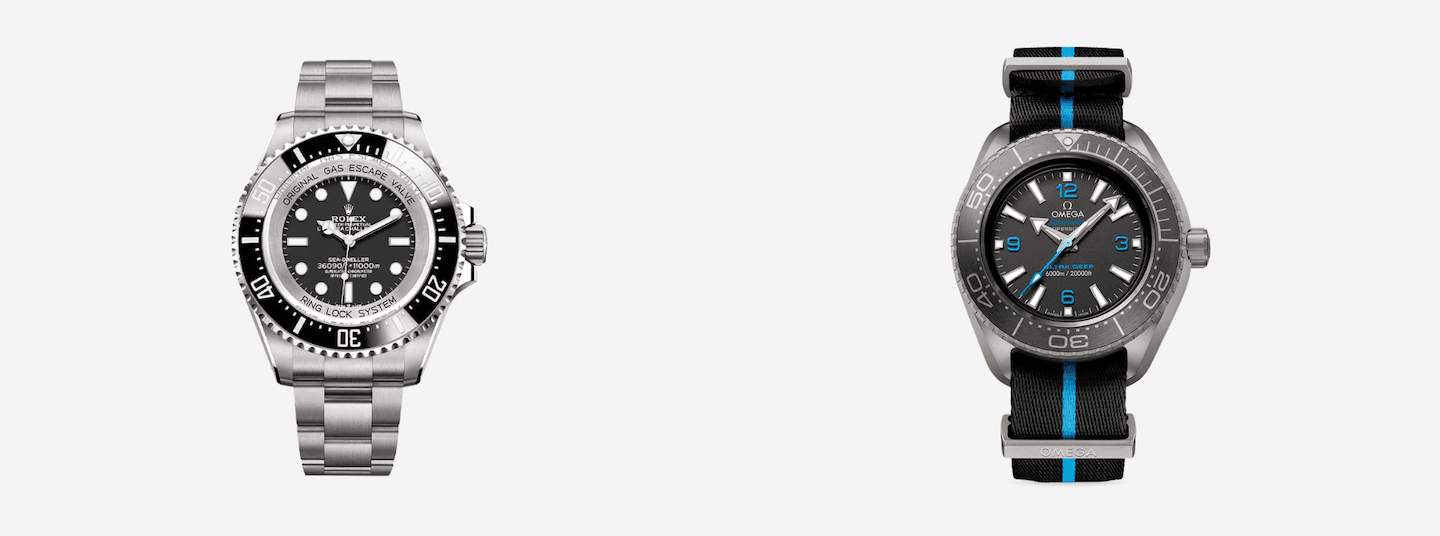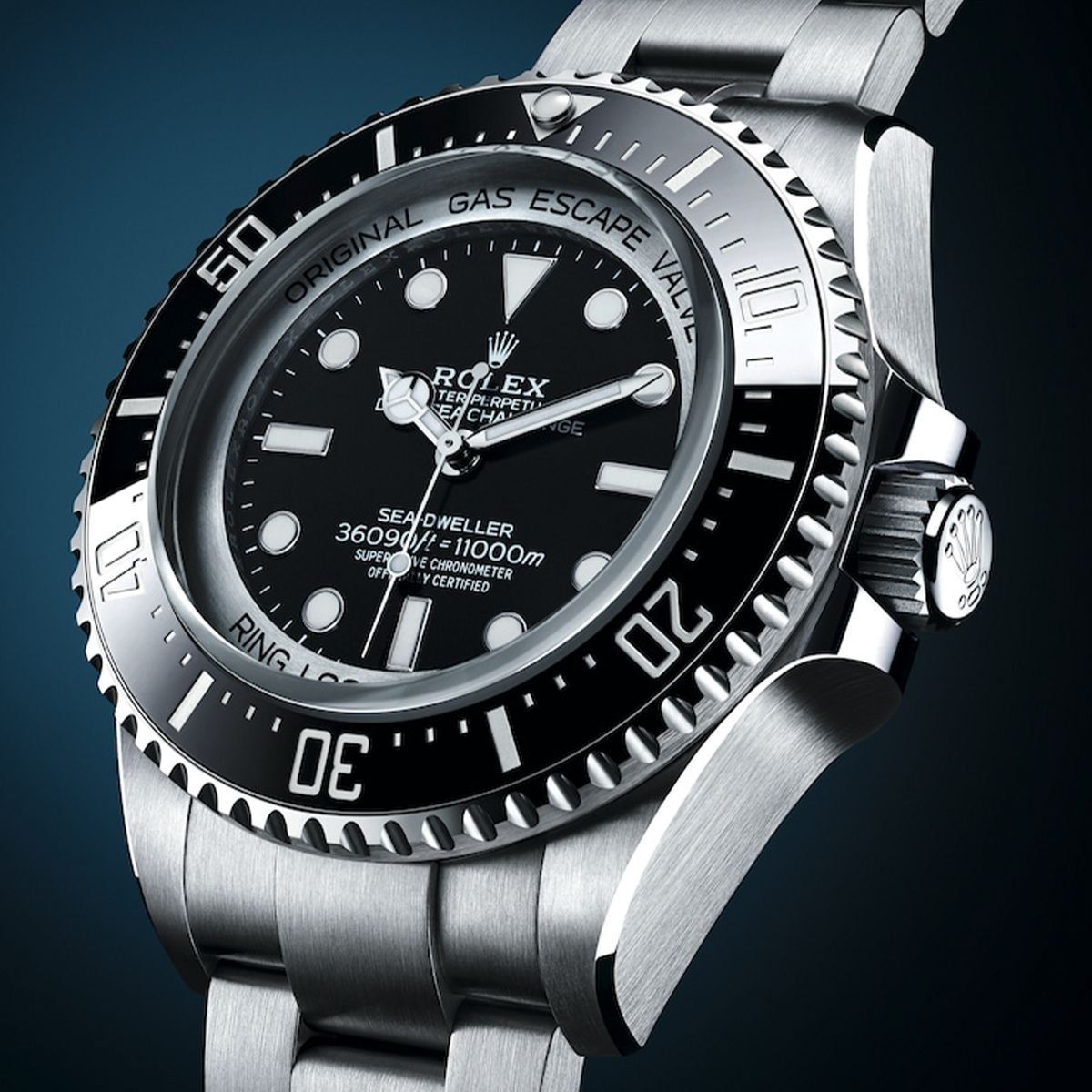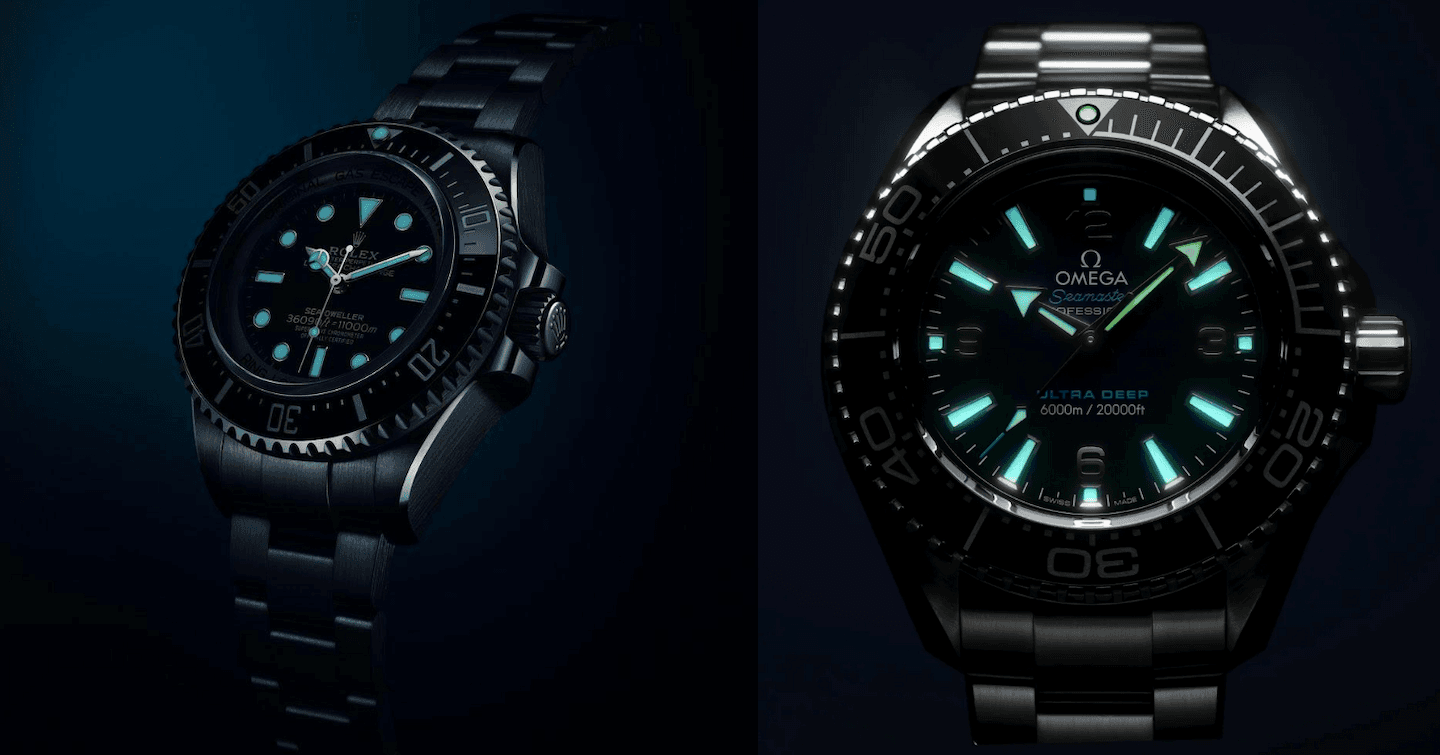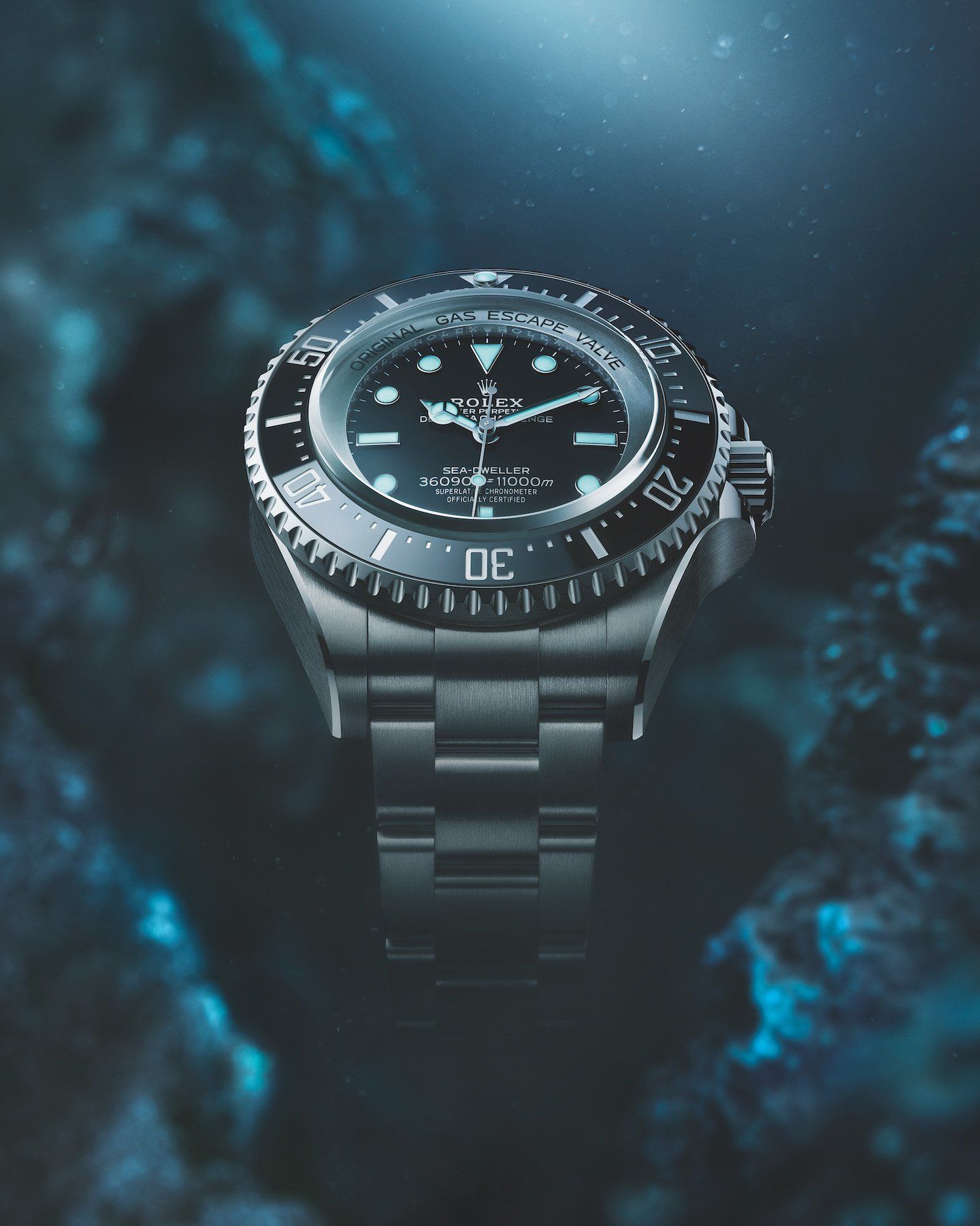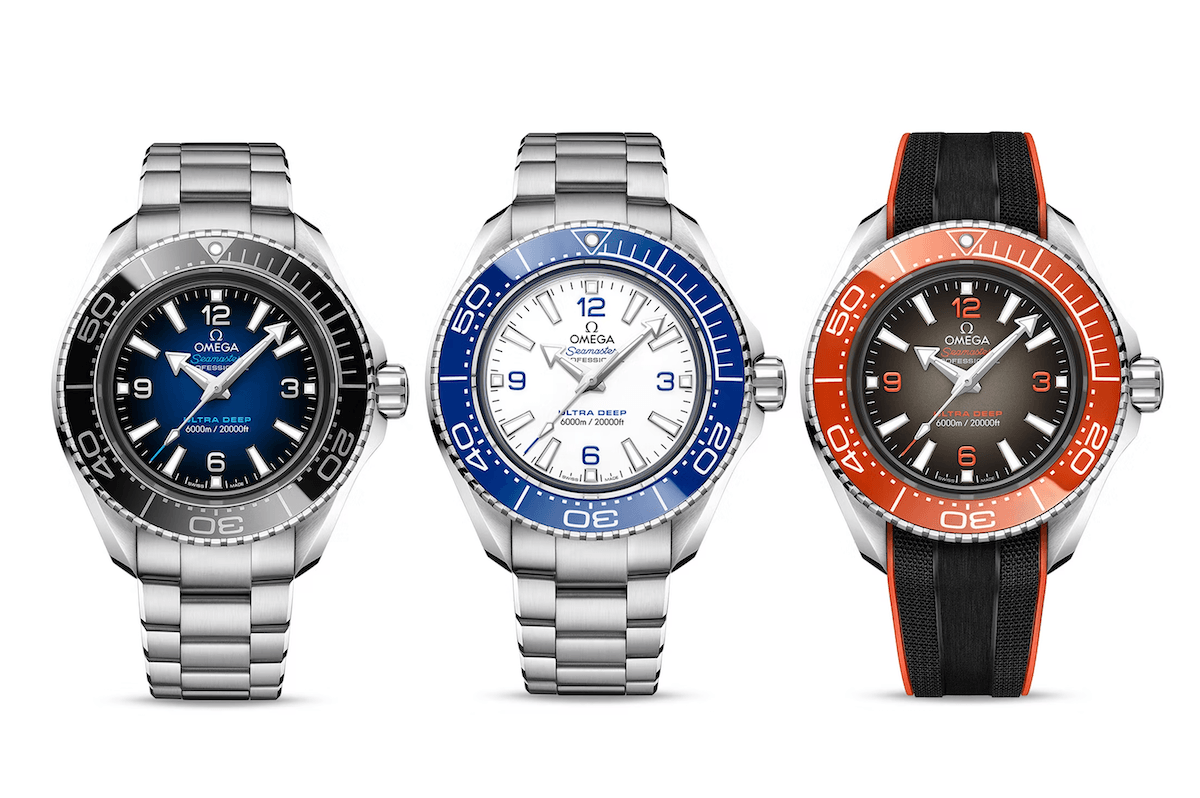SPECulation: Omega Seamaster Planet Ocean 6000m Ultra Deep vs Rolex Deepsea Challenge 2022
By Nirja Dutt
Both deep divers, both iconic brands, and both very compelling but which one suits you? I decided to inspect every element to make it easier for you.
A new deep dive takes over the watch world as trailblazing brands like Rolex and Omega lend their research to watches that truly survive the heart of the ocean. While it is believed that most dive watch customers barely ever explore the actuality of the feature, there is definitive pride and pleasure involved in owning a watch that can truly go the distance.
2022 saw two such creations that really go head to head when it comes to what will survive the subterranean region, the Omega Seamaster Planet Ocean 6000m Ultra Deep and Rolex Deepsea Challenge. Let’s take a closer look at what's on offer:
The Material
Both houses are known for their in-house alloys, the idea that has always been presented in a way wherein the alloy enhances all the abilities of the base material with a special twist that leads to better durability and heightens the purpose of its existence.
To start with Omega offers the Seamaster Planet Ocean Ultra Deep in O-MEGASTEEL which promises advanced strength, spotless color that will remain through time, excellent corrosion resistance and undeniable shine. The caseback is emblazoned with a laser engraved Sonar Medallion that is made from Grade 5 titanium and symbolizes the world record dive (of 2019) 10,925 meters i.e. 35,876ft. But that's not all, the house also offers a grade 5 sandblasted titanium version with a brushed ceramic bezel with a Liquidmetal™ diving scale, along with distinctive “Manta Lugs” that support a striped NATO strap in black and cyan. The dial is black ceramic titanium with cyan numerals and brushed hands and indexes. The caseback remains similar to the O-MEGASTEEL version, except here it appears tonal since the base material is also titanium.
Rolex on the other hand has crafted their Deepsea Challenge in RLX titanium. The in-house alloy has been crafted from grade 5 titanium to enable weightlessness and resistance to deformation and corrosion. Rolex also explains that the decision for this material was taken due its inspiration (the experimental watch that accompanied James Cameron in the Mariana Trench in 2012) and says that one of the issues was weight as that watch was made in 904L steel. The use of RLX titanium to create the case and bracelet of the Deepsea Challenge made its weight 30% lighter than the watch that inspired it. The material also lends to a particularly visible grain in the satin finish on the bracelet and the case. In order to highlight the curved profile of the lugs, the top edges have been chamfered and polished. The caseback is engraved with the words “Mariana Trench” as well as the dates “23-01-1960” and “26-03-2012” on the case back as a nod to the culmination of history that led to this piece, more on that later.
The Look
The first impression is lies based on where it stands in terms of your personal style. Right off the bat, the Rolex Deepsea Challenge is definitely more sprawling on the wrist in every way being a whopping 50mm wide and has a thickness of 23mm compared to the Omega Seamaster Ultra Deep’s diameter which is 45.5mm and has a height of 18mm. While the Omega presents an array of colors, materials and strap styles to suit you, Rolex stands strong with their Oyster Perpetual style with a clean black Cerachrom bezel insert and intense black dial.
The legibility is promised in both with their unique luminosity armory, for Rolex the hour markers, hands and capsule on the bezel are lit up with Chromalight which contains aluminum, strontium, dysprosium and europium and emits a characteristic blue glow which is exceptionally bright and long-lasting. Omega on the other hand uses 18k white gold on the hour markers and hands coated with Super Lumi-Nova.
The Movement
The Omega Ultra Deep uses Omega's time-only Master Chronometer Caliber 8912. A COSC-certified movement found in some other Omega dive watches with 60 hours of power reserve, capable of resisting magnetic fields reaching 15,000 gauss. Its two series-mounted barrels are rewound by a self-winding system that works in both directions of the rotor’s movement. Rolex Deepsea Challenge is powered by the caliber 3230 that guarantees a power reserve of approximately 70 hours. The movement was released in 2020 and features a barrel with thinner walls, which can better accommodate a longer spring and thus store more energy, and the integration of the Chronergy escapement combining high energy efficiency unaffected by magnetic fields.
The Resistance
Now the real kicker, the Omega Seamaster Planet Ocean Ultra Deep was ruling the category of deep sea divers with an impressive 6,000 meter / 20,000 ft resistance up until November 2022 which saw the launch of a very competitive and extremely bold Rolex DeepSea Challenge that boasts a whopping 11,000 meter / 36,089 ft. Although both brands boast testing that has gone way beyond (Omega went as deep as 7,500m and Rolex went all the way down to 13,750m). While this is a definitive factor in making a decision, I would recommend taking specs and look equally into measure unless you are actually going diving or on an expedition and one of these watches will be a part of your gear.
The X Factor
While directly comparable nuances are one way to see what works for you, it's the story, narrative and little details that really make you fall in love with a watch. These are a few fun facts and features about each of these two creations that could tip the scales for you.
Rolex DeepSea Challenge:
- All Rolex divers’ watches are tested at their guaranteed waterproofness depth plus an additional 25 per cent.
- The first DeepSea record is from 1953 which withstood the depth of 3,150 meters (10,300 feet).
- The watch features the house’s signature Ringlock system which comprises a thick, slightly domed sapphire crystal. This nitrogen-alloyed steel compression ring helps withstand any pressure that can be inflicted on the watch up till 11,000m.
- The 50mm diameter marks the largest ever dial that Rolex has produced for commercial consumption.
- The watch only weighs 251 grams.
- The watch also includes one of Rolex’s most famous inventions, the helium escape valve, first introduced in 1967 as a method to release helium gas that can build up inside the case of a watch at extreme depth.
- The titanium version of the watch weighs only 123 grams.
- Compared to the previous Planet Ocean offerings, this edition features a new bracelet with a clasp featuring a push-button that allows a six-position micro adjust with 2.3mm of extension.
- This model is crafted after the winning Omega Ultra Deep that was made for the Five Deeps Expedition in 2019, where it beat Rolex by 8 meters that year.
- The timepiece has been tested to meet the ISO 6425:2018 standard. Nine tests are performed and include examinations for visibility, magnetic resistance, temperature cycling, salt spray, shock resistance, water-resistance, free-fall shock, the resistance of attachments and saturation diving.
And now finally the price, the Rolex DeepSea Challenge is ₹19,84,000 and the Omega Seamaster Planet Ocean Ultra Deep starts at ₹11,16,500 for titanium, ₹10,48,000 for steel with bracelet and ₹10,18,600 for the rubber strap version. While each promises a legacy, style and flex of its own, let's not forget these watches are first and foremost a flex, one that proves what the brand is truly capable of. So while most of you might not have a practical use for it yet, it's still undoubtedly worth it.
No articles found

